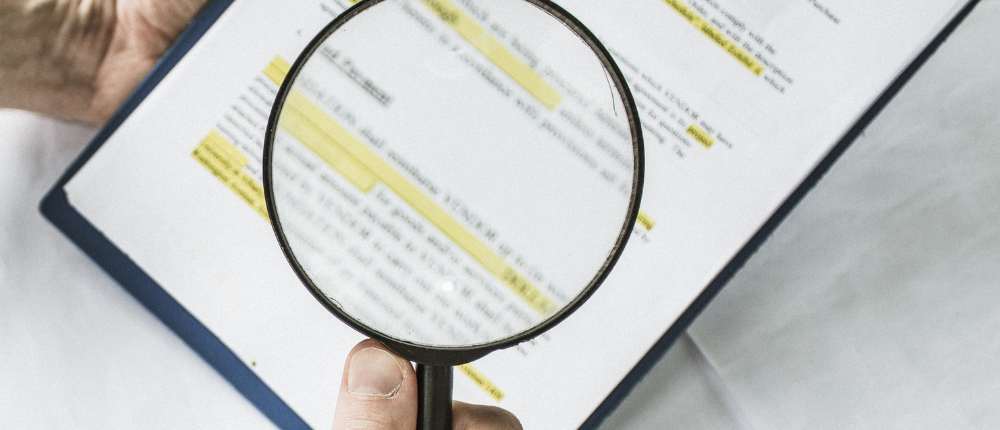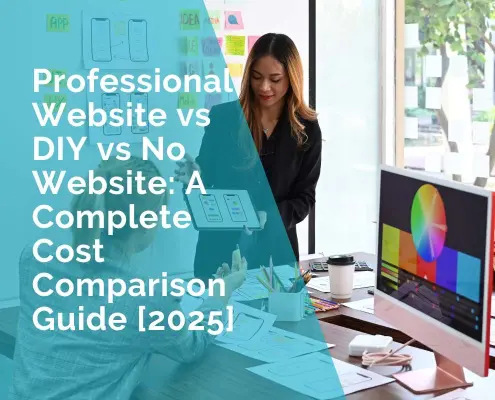Does a New Website Need Terms and Conditions?
Terms and conditions, often abbreviated as T&C or TOS (terms of service), are the rules and guidelines that users must agree to abide by when using a website or online service. They outline the rights, responsibilities, and expectations of both the website owner and its users. Essentially, they form a contract between the website and its visitors, governing the usage of the site and its services.
Importance of Terms and Conditions for Websites
Terms and conditions play a crucial role in providing clarity and legal protection for websites across various industries. Here’s why they are essential:
- Legal Protection: Terms and conditions serve as a legal agreement between the website owner and users, helping to mitigate potential disputes and liability issues. They establish the rules for using the website, including disclaimers, limitations of liability, and dispute resolution mechanisms.
- User Agreement: Terms and conditions set out the expectations and responsibilities for both parties, ensuring that users understand their rights and obligations when interacting with the website. This can include guidelines on acceptable behavior, prohibited activities, and user-generated content.
- Data Protection and Privacy: With increasing concerns about data privacy and security, terms and conditions provide transparency regarding how user data is collected, stored, and used. They outline the website’s privacy practices, compliance with data protection laws, and mechanisms for user consent.
- Intellectual Property Rights: Websites often contain original content, trademarks, and other intellectual property that need protection. Terms and conditions clarify ownership rights, usage permissions, and restrictions on the unauthorized use of intellectual property.
Legal Protection
Liability Limitation
Liability limitation clauses in terms and conditions are crucial for protecting website owners from legal claims and financial losses. These clauses specify the extent to which the website owner can be held liable for damages arising from the use of the website or its services.
Example: A fitness app includes a liability limitation clause in its terms and conditions, stating that the company is not responsible for any injuries or health issues that users may experience while following its exercise routines. By clearly defining the limits of its liability, the app protects itself from potential lawsuits related to user injuries.
Dispute Resolution
Dispute resolution mechanisms outline the procedures for resolving disagreements or conflicts between the website owner and users. By establishing clear procedures for dispute resolution, websites can avoid costly legal battles and maintain positive relationships with their users.
Example: An online marketplace includes a dispute resolution clause in its terms and conditions, stating that any disputes between buyers and sellers will be resolved through mediation or arbitration. This ensures a fair and efficient process for resolving disputes, reducing the likelihood of lengthy court proceedings and fostering trust within the marketplace community.
Intellectual Property Protection
Intellectual property protection clauses safeguard the website owner’s rights to their original content, trademarks, and other intellectual property. By outlining ownership rights, usage permissions, and restrictions, these clauses prevent unauthorized use or infringement of intellectual property.
Example: A music streaming service includes an intellectual property protection clause in its terms and conditions, stating that users are prohibited from downloading or distributing copyrighted music without permission. This protects the rights of artists and record labels, while also ensuring compliance with copyright laws.
User Agreement
User Responsibilities
User responsibilities outline the expectations and obligations that users must adhere to when interacting with a website or online service. By clearly defining user responsibilities, websites can maintain a safe and respectful environment for all users and protect their own interests.
Example: A social media platform includes a user responsibilities section in its terms and conditions, stating that users must not engage in abusive behaviour, harassment, or illegal activities on the platform. By setting clear guidelines for acceptable behaviour, the platform promotes a positive user experience and mitigates the risk of harmful interactions.
Acceptable Use Policy
An acceptable use policy (AUP) sets out the rules and guidelines governing the acceptable use of a website or online service. It outlines prohibited activities, content restrictions, and consequences for violations to ensure that users utilize the website in a lawful and appropriate manner.
Example: An online gaming platform includes an acceptable use policy in its terms and conditions, specifying that users must not cheat, exploit glitches, or engage in disruptive behavior during gameplay. By enforcing fair play standards, the platform maintains a level playing field for all users and preserves the integrity of the gaming experience.
Privacy Policy
A privacy policy is a crucial component of the user agreement that outlines how a website collects, uses, and protects user data. It informs users about their privacy rights, data handling practices, and options for controlling their personal information.
Example: A financial management app includes a privacy policy in its terms and conditions, detailing the types of personal information collected (such as banking details and transaction history), how it is used (for account management and analytics), and the security measures in place to protect user data. By being transparent about its privacy practices, the app builds trust with users and demonstrates compliance with data protection regulations.
Data Protection and Privacy
Collection of Personal Information
The collection of personal information is a common practice for many websites and online services, but it’s essential to do so responsibly and transparently. Clearly outlining how personal data is collected, used, and protected helps build trust with users and ensures compliance with privacy regulations.
Example: A travel booking website collects personal information such as names, email addresses, and passport details from users when they make reservations. In its terms and conditions, the website specifies that this information is necessary for booking purposes only and will not be shared with third parties without user consent. By providing this clarity, the website instills confidence in users regarding the handling of their personal data.
Data Security Measures
Protecting user data from unauthorized access, breaches, and misuse is paramount for maintaining trust and credibility. Implementing robust data security measures demonstrates a commitment to safeguarding sensitive information and mitigating risks associated with cyber threats.
Example: A cloud storage service employs encryption protocols, firewalls, and regular security audits to protect user files and data from unauthorized access or hacking attempts. In its terms and conditions, the service provider assures users that their data is stored securely and that stringent security measures are in place to prevent breaches. This reassures users about the safety of their confidential information.
GDPR Compliance (if applicable)
The General Data Protection Regulation (GDPR) is a comprehensive data protection law that applies to businesses operating in the European Union (EU) or handling the personal data of EU residents. Websites must ensure compliance with GDPR requirements, including obtaining user consent for data processing, providing transparency about data practices, and offering mechanisms for data access and control.
Example: An e-commerce platform that sells products to customers in EU countries includes GDPR compliance language in its terms and conditions. It informs users about their rights under the GDPR, such as the right to access, rectify, or erase their personal data, and provides instructions for exercising these rights. By adhering to GDPR principles, the platform demonstrates its commitment to protecting user privacy and complying with EU data protection laws.
Intellectual Property Rights
Protecting intellectual property rights is vital for websites to safeguard their original content, branding, and user-generated materials. By establishing clear guidelines and protections, websites can prevent unauthorized use or infringement of their intellectual property.
Copyright Protection
Copyright protection safeguards original works of authorship, such as text, images, videos, and software code, from unauthorized copying, distribution, or reproduction. Websites should assert their copyright ownership and specify how users may or may not use their copyrighted materials.
Example: A photography website includes a copyright notice in its terms and conditions, stating that all images displayed on the site are protected by copyright law and may not be reproduced or distributed without permission. By asserting its copyright protection, the website preserves the rights of photographers and prevents unauthorized use of their work.
Trademark Protection
Trademark protection safeguards brand names, logos, slogans, and other identifiers that distinguish a company’s products or services from competitors. Websites should specify their trademark rights and prohibit the unauthorized use or imitation of their trademarks.
Example: A fashion brand includes a trademark protection clause in its terms and conditions, stating that its logo and brand name are registered trademarks and may not be used in connection with similar products or services without permission. By enforcing trademark protection, the brand maintains its distinct identity and prevents consumer confusion or dilution of its brand equity.
User Content Ownership
User-generated content, such as comments, reviews, and submissions, may be subject to ownership rights and usage permissions. Websites should clarify ownership of user-generated content and specify how it may be used or displayed on the site.
Example: A social media platform includes a user content ownership clause in its terms and conditions, stating that users retain ownership of the content they post on the platform but grant the platform a license to use, modify, and display their content for promotional purposes. By clarifying user content ownership, the platform ensures transparency and facilitates the sharing of user-generated content within the community.
Governing Law and Jurisdiction
Establishing governing law and jurisdiction clauses in terms and conditions is essential for defining the legal framework under which disputes will be resolved and determining the applicable laws that govern the website’s operations.
Choice of Law Clause
A choice of law clause specifies the jurisdiction whose laws will govern any disputes that may arise between the website owner and its users. This clause helps ensure consistency and predictability in legal proceedings and avoids confusion over which laws apply.
Example: An online marketplace includes a choice of law clause in its terms and conditions, stating that the laws of the state where the company is headquartered will govern any disputes arising from the use of the platform. By specifying the applicable law, the marketplace provides clarity to users and avoids potential conflicts over jurisdictional issues.
Jurisdiction Clause
A jurisdiction clause determines the courts or tribunals that have authority to hear and resolve disputes between the website owner and its users. By designating a specific jurisdiction for legal proceedings, websites can streamline dispute resolution processes and avoid costly litigation in unfamiliar jurisdictions.
Example: A software company includes a jurisdiction clause in its terms and conditions, specifying that any disputes arising from the use of its software will be subject to the exclusive jurisdiction of the courts in a particular city or county. This ensures that legal proceedings will take place in a convenient and familiar location for both parties, reducing the time and expense associated with resolving disputes.
Updates and Amendments
Keeping terms and conditions up-to-date is crucial to reflect changes in laws, regulations, and business practices. A revision policy and notification of changes ensure that users are informed about any updates to the terms and conditions and understand their implications.
Revision Policy
A revision policy outlines the procedures for updating or amending the terms and conditions and communicates how users will be notified of these changes. It provides transparency and ensures that users are aware of any modifications to the agreement.
Example: An online banking platform includes a revision policy in its terms and conditions, stating that the platform reserves the right to update or modify the terms at any time. It specifies that users will be notified of changes through email or by a prominent notice on the website. By implementing a clear revision policy, the platform ensures transparency and accountability in updating its terms and conditions.
Notification of Changes
Notification of changes ensures that users are informed about updates to the terms and conditions and have an opportunity to review the changes before continuing to use the website or its services. Providing timely and conspicuous notifications helps maintain trust and compliance with legal requirements.
Example: A social media platform sends email notifications to all registered users informing them of recent changes to its terms and conditions. The email includes a summary of the changes and a link to the updated terms on the platform’s website. By proactively notifying users of changes, the platform ensures transparency and allows users to review and understand the updated terms.
Terms and conditions provide a framework for defining the rights and responsibilities of both website owners and users. They establish legal protections, outline user agreements, safeguard data privacy, protect intellectual property rights, and provide mechanisms for resolving disputes. By implementing comprehensive terms and conditions, websites can create a safe, transparent, and trustworthy environment for users to engage with their platforms.
Frequently Asked Questions
What are terms and conditions (T&C), and why are they important for a website?
Terms and conditions (T&C) are a set of rules and guidelines that govern the use of a website by visitors or users. They outline the rights and responsibilities of both the website owner and the users. T&C are essential for clarifying legal matters, protecting intellectual property, setting expectations, and minimizing disputes.
Is it necessary for a new website to have terms and conditions?
While it’s not legally required for all websites to have terms and conditions, it’s highly recommended, especially for websites that offer products, services, or interactive features. T&C provide legal protection for the website owner and establish the rules for using the website, which can help prevent misunderstandings and potential legal issues.
What should be included in the terms and conditions of a new website?
The content of T&C can vary depending on the nature of the website, but common elements include:
- User agreement: Terms of service, privacy policy, and acceptable use policy.
- Intellectual property rights: Copyright, trademarks, and licensing terms.
- Dispute resolution: Arbitration clauses, jurisdiction, and governing law.
- Liability disclaimer: Limitations of liability, warranties, and indemnification.
- User obligations: Rules for user conduct, account registration, and content submission.
Can I use a template for creating terms and conditions for my website?
Yes, you can use templates or generators available online to create terms and conditions for your website. However, it’s important to customize the template to suit the specific needs and circumstances of your website and seek legal advice if necessary to ensure compliance with applicable laws and regulations.
What are the consequences of not having terms and conditions on my website?
Without T&C, your website may be vulnerable to legal risks and disputes, such as disputes over ownership of content, unauthorized use of intellectual property, privacy violations, and liability for user-generated content. Having clear and enforceable T&C can help protect your rights and minimize legal exposure.
Do I need to update my website’s terms and conditions regularly?
Yes, it’s advisable to review and update your website’s terms and conditions periodically to ensure that they remain accurate, up-to-date, and compliant with relevant laws and regulations. Changes in your business operations, website features, or legal requirements may necessitate updates to your T&C.
Where should I display the terms and conditions on my website?
The terms and conditions should be easily accessible to website visitors and users. They are typically displayed as a clickable link in the footer of the website on every page. Additionally, you can prompt users to review and accept the T&C during account registration or checkout processes for e-commerce websites.
Are terms and conditions legally binding?
Yes, terms and conditions are legally binding agreements between the website owner and users who access or use the website. By accessing or using the website, users agree to be bound by the terms and conditions outlined therein. However, enforceability may vary depending on factors such as jurisdiction and compliance with applicable laws.
Can I include a disclaimer in my website’s terms and conditions?
Yes, including a disclaimer in your website’s terms and conditions is common practice and can help limit your liability for certain types of damages or risks associated with using the website. Disclaimers typically address issues such as accuracy of information, third-party content, and limitations of liability.
Do I need a lawyer to draft terms and conditions for my website?
While it’s not mandatory to hire a lawyer to draft terms and conditions for your website, it’s often advisable, especially for complex or high-risk websites. A lawyer with experience in internet law can ensure that your T&C are legally sound, enforceable, and tailored to your specific needs and circumstances.
Can I copy terms and conditions from another website?
Copying terms and conditions from another website without permission is not recommended, as it may infringe on the original author’s intellectual property rights and may not accurately reflect the legal requirements or nuances of your own website. It’s best to create custom terms and conditions or use legally vetted templates.
Do I need to include a privacy policy in my website’s terms and conditions?
Yes, including a privacy policy is essential for websites that collect personal information from users, such as names, email addresses, or payment details. The privacy policy should outline how personal information is collected, used, stored, and protected in compliance with privacy laws such as GDPR or CCPA.
Can I make changes to my website’s terms and conditions after they have been published?
Yes, you can make changes to your website’s terms and conditions after they have been published. However, it’s important to notify users of any changes and obtain their consent if necessary, especially if the changes materially affect their rights or obligations. Providing a notice of updates and an opportunity to review and accept the revised T&C is recommended.
Are terms and conditions different from a privacy policy?
Yes, terms and conditions and a privacy policy serve different purposes. Terms and conditions govern the use of the website and establish the legal relationship between the website owner and users, while a privacy policy outlines how personal information is collected, used, and protected by the website owner in compliance with privacy laws.
Can I enforce my website’s terms and conditions against users?
Yes, you can enforce your website’s terms and conditions against users who violate them by taking legal action, such as terminating their access to the website, seeking damages for breach of contract, or pursuing remedies through arbitration or litigation. However, enforcement may depend on factors such as jurisdiction, compliance with applicable laws, and the specific terms outlined in your T&C.
 Ivana Katz from Websites 4 Small Business is an award winning web designer who builds websites that build your business. She provides unbeatable web design services to fit your budget.
Ivana Katz from Websites 4 Small Business is an award winning web designer who builds websites that build your business. She provides unbeatable web design services to fit your budget.
The end result? Professional, custom-made sites that give your business the extra oomph it needs to stand out from the competition and make an impact.
Whether you’re a brand-new business or an established one ready to improve your digital presence, Ivana makes it easy to get your business online very quickly. Her websites are professional, tailored to fit your budget, and give your business a serious boost.
Download your FREE copy of “Ultimate Website Design Secrets Blackbook – 10 Bulletproof Strategies for Designing an Outrageously Successful Website”












